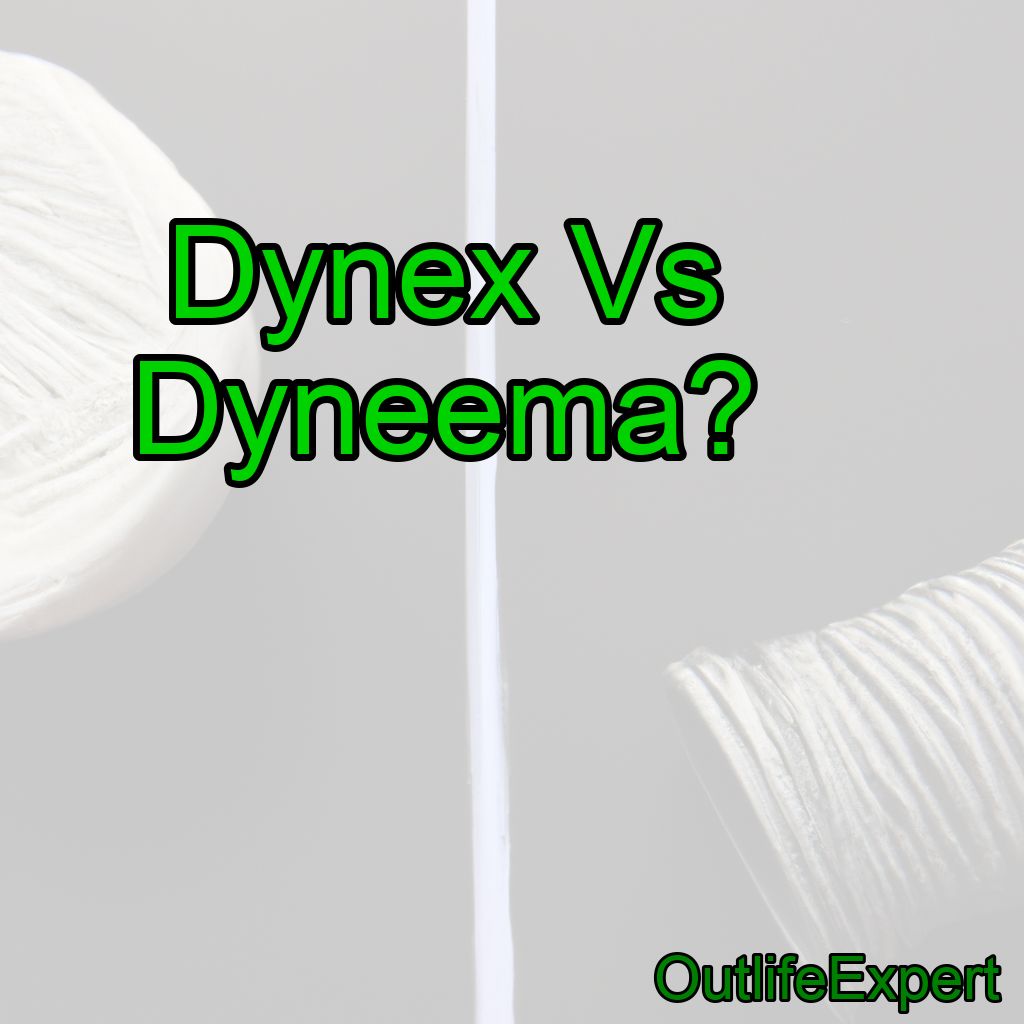When it comes to high-performance fibers, two names often come to mind: Dynex and Dyneema. But which of these two materials is superior? In this in-depth comparison, we will explore the properties, applications, and key differences between Dynex and Dyneema to help you make an informed decision for your specific needs.
What is Dynex?
Dynex is a high-performance fiber made from ultra-high molecular weight polyethylene (UHMWPE). It is known for its exceptional strength-to-weight ratio, resistance to abrasion, and low stretch properties. Dynex is commonly used in a variety of applications, including sailing, climbing, and industrial settings.
Properties of Dynex
–High strength-to-weight ratio: Dynex is one of the strongest fibers available, with a tensile strength up to 15 times greater than steel on a weight-for-weight basis. This means that it is incredibly strong while remaining lightweight.
–Low elongation: Dynex has a very low stretch, making it ideal for applications where minimal elongation is desired, such as in ropes and slings.
–Excellent abrasion resistance: Dynex is highly resistant to abrasion, meaning that it can withstand rubbing and wear without breaking down.
–UV resistance: Dynex exhibits good resistance to ultraviolet (UV) radiation, making it suitable for outdoor applications.
What is Dyneema?
Dyneema, also known as ultra-high molecular weight polyethylene (UHMWPE), is a high-performance fiber that boasts remarkable strength, lightweight properties, and resistance to abrasion. It is often used in a variety of applications, such as ropes, nets, and protective gear.
Properties of Dyneema
–Exceptional strength-to-weight ratio: Like Dynex, Dyneema has an outstanding strength-to-weight ratio, making it one of the strongest fibers on the market.
–Low elongation: Dyneema also exhibits low elongation, making it suitable for applications where minimal stretch is required.
–High abrasion resistance: Dyneema is known for its excellent abrasion resistance, allowing it to withstand wear and tear in demanding environments.
–UV resistance: Dyneema has good resistance to UV radiation, making it suitable for outdoor applications.
–Chemical resistance: Dyneema exhibits resistance to various chemicals, including acids, alkalis, and solvents, making it suitable for use in harsh environments.
Dynex vs Dyneema: Key Differences and Applications
While both Dynex and Dyneema share many similarities, there are some key differences between the two materials that may make one more suitable for a particular application than the other.
Strength and Weight
Both Dynex and Dyneema boast an impressive strength-to-weight ratio, with Dyneema being slightly stronger than Dynex. However, this difference is often negligible and may not be significant enough to impact your decision.
Stretch and Elongation
Dynex and Dyneema both exhibit low elongation, making them ideal for applications where minimal stretch is desired. However, Dynex may have a slightly lower elongation than Dyneema, which could be a consideration for specific applications.
Abrasion Resistance
Dyneema is generally considered to have superior abrasion resistance than Dynex. This means that Dyneema may be more suitable for applications where increased wear resistance is required, such as in ropes used for sailing or climbing.
Cost
Dyneema tends to be more expensive than Dynex due to its slightly superior properties. However, the price difference may not be significant enough to influence your decision, especially if the performance differences are negligible for your specific application.
Applications
Both Dynex and Dyneema are used in a variety of applications, including sailing, climbing, and industrial settings. However, Dyneema is often preferred for applications where increased abrasion resistance is required, while Dynex may be more suitable for applications where a slightly lower elongation is desired.
Conclusion: Dynex vs Dyneema
In conclusion, both Dynex and Dyneema are high-performance fibers with exceptional strength, low stretch, and excellent abrasion resistance. While there are some differences between the two materials, the choice between Dynex and Dyneema ultimately depends on your specific needs and budget. Here are 10 key facts about Dynex and Dyneema:
1.Dynex and Dyneema are both made from ultra-high molecular weight polyethylene (UHMWPE).
2.Both fibers have a high strength-to-weight ratio, with Dyneema being slightly stronger than Dynex.
3.Dynex and Dyneema have low elongation properties, making them ideal for applications where minimal stretch is desired.
4.Dyneema has superior abrasion resistance compared to Dynex.
5.Both Dynex and Dyneema exhibit good UV resistance, making them suitable for outdoor applications.
6.Dyneema also has chemical resistance properties, making it suitable for use in harsh environments.
7.Both fibers are used in a variety of applications, including sailing, climbing, and industrial settings.
8.Dyneema tends to be more expensive than Dynex, but the price difference may not be significant enough to impact your decision.
9.The choice between Dynex and Dyneema depends on your specific needs and budget.
10.Both Dynex and Dyneema are exceptional high-performance fibers that offer a range of benefits for various applications.




